Parker County
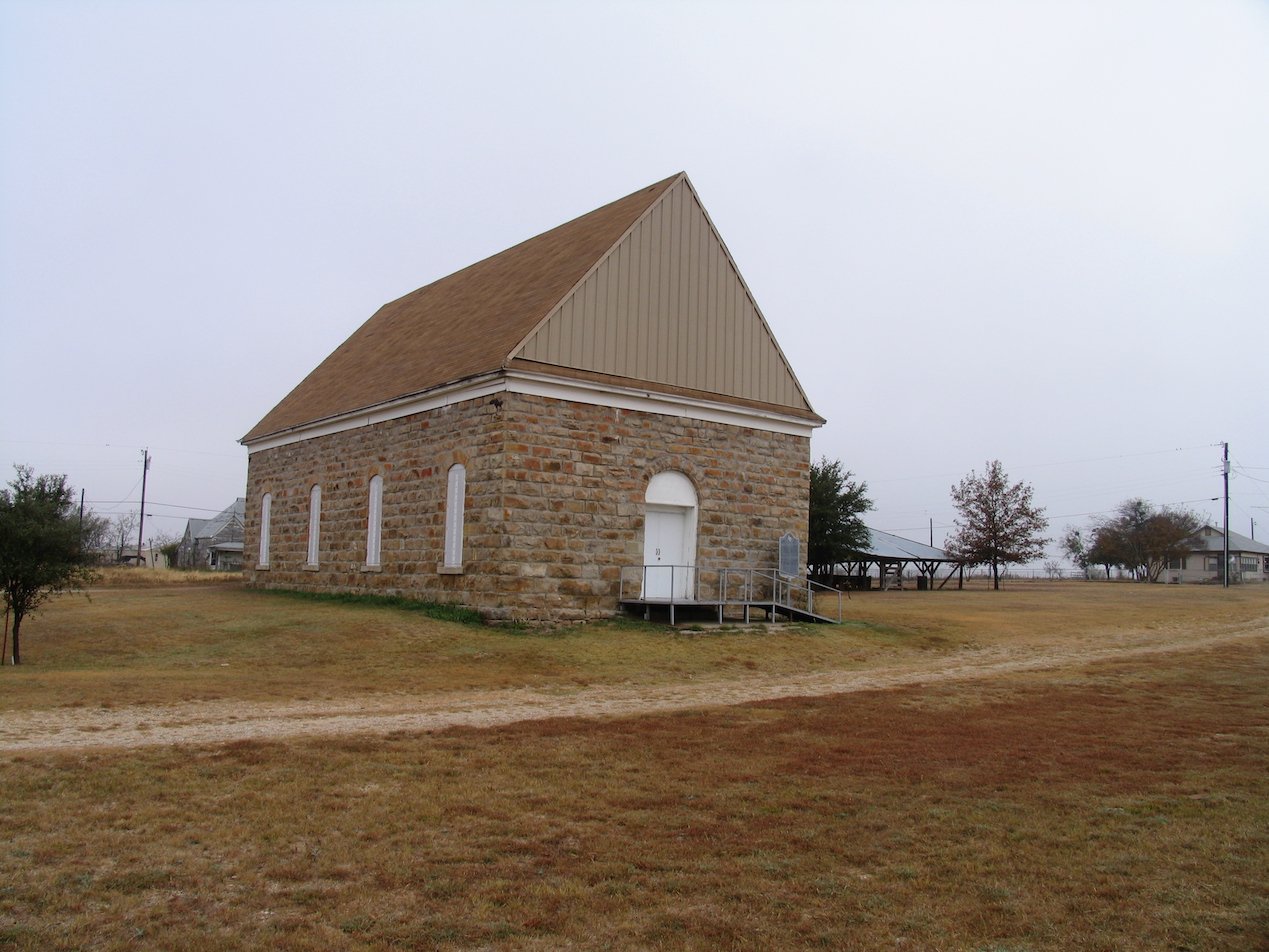
Whitt Seminary, Parker County, TX
Photo Credit: Robert Plocheck.
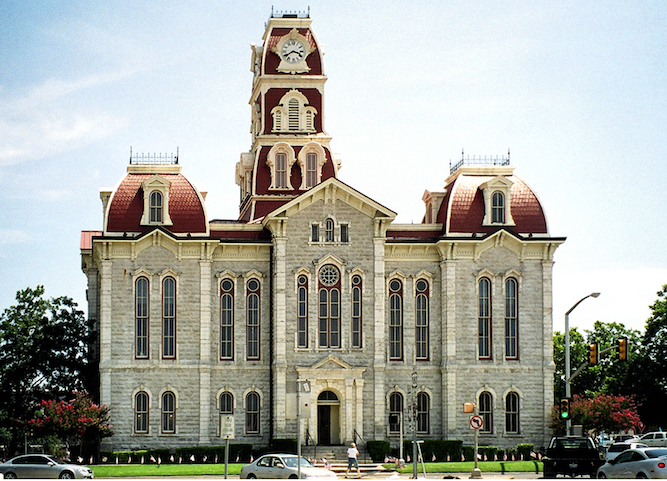
Parker County, Texas
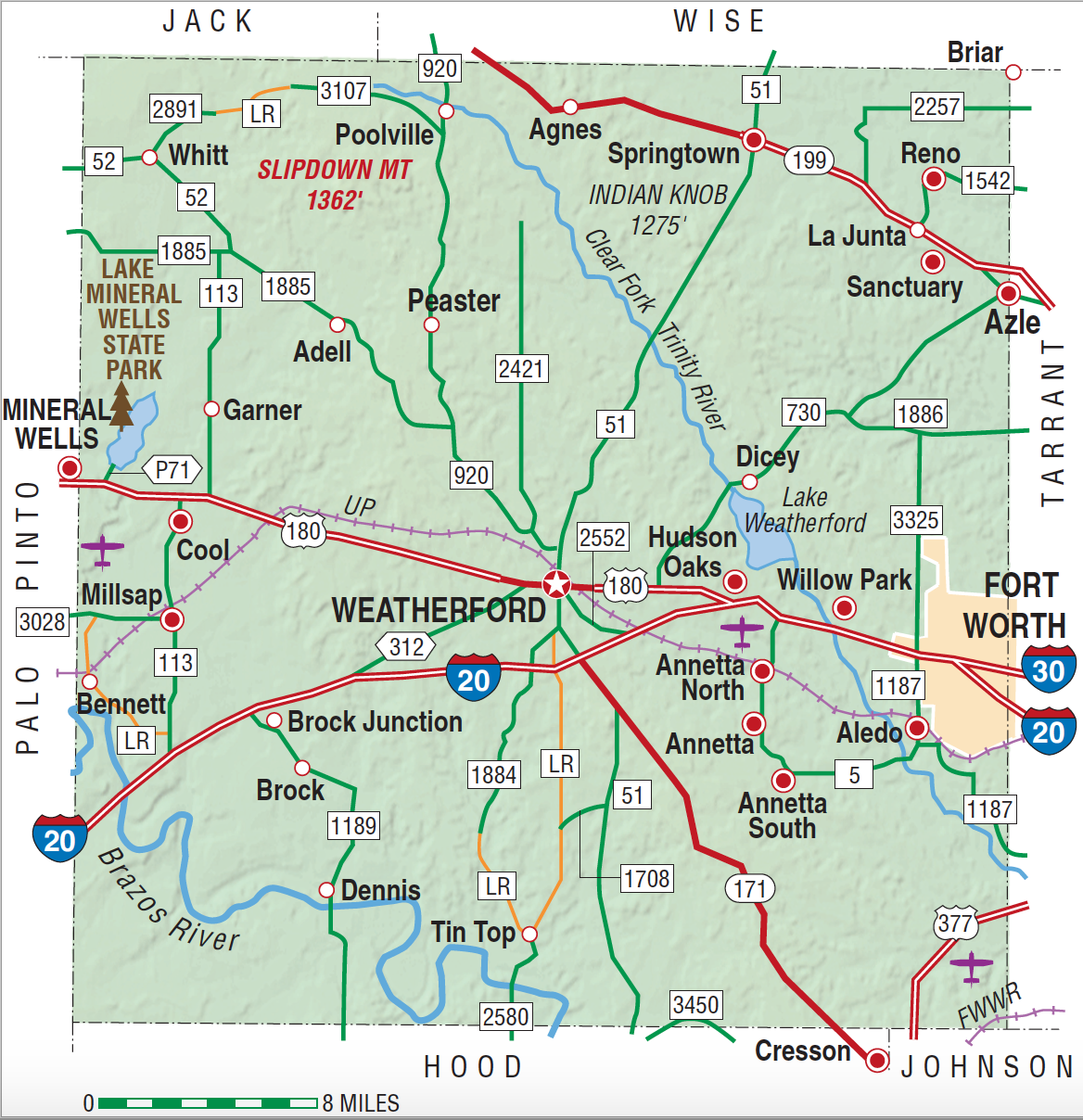
Parker County, Texas
Parker County, in north central Texas, is bounded on the north by Jack and Wise counties, on the east by Tarrant County, on the south by Hood and Johnson counties, and on the west by Palo Pinto County. The county's center point is at 32°40' north latitude and 97°40' west longitude. Weatherford, the county seat, is thirty miles west of Fort Worth. The county was named for Isaac Parker. It covers 902 square miles of undulating to hilly land; elevations range from 700 to 1,200 feet above sea level. The county's gently rolling plains, situated mostly in the Rolling Timbers vegetation region, are covered by tall grasses, mesquite, and oak. Elm, walnut, and pecan trees are common along streams and valleys. The sandy loams found in the Cross Timbers part of the county are drained by the Brazos River; the eastern and central parts of the county are within the Grand Prairie region and are drained by the upper tributaries of the Trinity River. Lakes Weatherford and Mineral Wells provide recreational facilities as well as municipal water. Temperatures range from an average high of 96° F in July to an average low of 34° in January, and rainfall averages slightly more than thirty-two inches a year. The average growing season lasts 225 days. In 1982, 74 percent of Parker County was in farms or ranches, with about 12 percent of the farmland under cultivation. About 74 percent of the county's agricultural income that year derived from livestock and livestock products; dairy products were an important component of the local economy. Hay, oats, wheat, peanuts, sorghum, watermelons, and peaches were also grown in the area. Mineral resources included natural gas, sand, gravel, bituminous coal, and limited amounts of oil. In 1982, almost 32,601,000,000 cubic feet of gas-well gas, almost 307,000,000 cubic feet of casinghead gas, and about 140,000 barrels of oil were produced in the county. In the 1980s the county's transportation network included Interstate Highway 20 (east to west), U.S. Highway 180 (east to west), and State Highway 171, which ran south from Weatherford. The county was also served by the Missouri Pacific Railroad and by the Weatherford, Mineral Wells and Northwestern Railway.
No effort was made to colonize the area that is now Parker County area under Spanish or Mexican rule, although parts of the county were part of an early land grant from Stephen F. Austin and Samuel May Williams. Kiowas and Comanches controlled the area in the late 1840s, when settlers of European descent began moving into the region on trails along the Brazos that had previously been established by the Indians. Immigration to the area was encouraged during the early 1850s by an outbreak of malaria in Tarrant, Denton, and Collin counties, and by the establishment of the Butterfield Overland Mail route in 1855. Under the leadership of Isaac Parker 224 settlers in the area signed a petition requesting the establishment of a new county, and in December 1855 the state legislature formed Parker County from Bosque and Navarro counties. Weatherford was designated as the county seat, and by 1858 the town had a new two-story brick courthouse surrounded by a handful of cabins and tents. By the late 1850s post offices had been established in the county at Weatherford, Ashville, Cooper Hill, Cream Level (later known as Veal's Station), and Newburg. The county's first flour mill was built in 1859; another was established in 1860. The new settlers were often harassed by Indian raids. The county's first newspaper, the Frontier News, began publication in 1858. Another paper, the Whiteman, moved to Weatherford in October 1860. This newspaper, published by John Robert Baylor and J. Hamner, was dedicated to the frontier and its defense against Indians, abolitionists, and horse thieves. It apparently ceased publication in December 1860. That year 4,213 people, including 222 slaves, were living in the county. The agricultural census counted 397 farms and ranches of three acres or larger in the county that year, as well as more than 14,000 cattle and about 4,000 sheep. "Improved" acres numbered almost 13,000. County farmers produced more than 79,000 bushels of corn and almost 22,000 bushels of wheat, along with smaller crops of rye, potatoes, and sweet potatoes.
Jeri Echeverria | © TSHA

Adapted from the official Handbook of Texas, a state encyclopedia developed by Texas State Historical Association (TSHA). It is an authoritative source of trusted historical records.

- ✅ Adoption Status:
- This place is available for adoption! Available for adoption!
- Adopted by:
- Your name goes here
- Dedication Message:
- Your message goes here
Currently Exists
Yes
Place type
Parker County is classified as a County
Altitude Range
700 ft – 1362 ft
Size
Land area does not include water surface area, whereas total area does
- Land Area: 903.5 mi²
- Total Area: 910.1 mi²
Temperature
January mean minimum:
30.1°F
July mean maximum:
93.2°F
Rainfall, 2019
35.8 inches
Population Count, 2019
142,878
Civilian Labor Count, 2019
65,894
Unemployment, 2019
6.9%
Property Values, 2019
$16,272,092,801 USD
Per-Capita Income, 2019
$53,289 USD
Retail Sales, 2019
$2,714,632,098 USD
Wages, 2019
$430,773,486 USD
County Map of Texas
Parker County
- Parker County
Places of Parker County
| Place | Type | Population (Year/Source) | Currently Exists |
|---|---|---|---|
| Town | 100 (2009) | Yes | |
| Town | 100 (2009) | Yes | |
| Town | 60 (2014) | Yes | |
| Town | – | – | |
| Town | 5,380 (2021) | Yes | |
| Town | 3,153 (2021) | Yes | |
| Town | 572 (2021) | Yes | |
| Town | 637 (2021) | Yes | |
| Town | – | – | |
| Town | 15 (2009) | Yes | |
| Town | 13,518 (2021) | Yes | |
| Town | – | – | |
| Town | – | – | |
| Town | – | – | |
| Town | – | – | |
| Town | 120 (2014) | Yes | |
| Town | – | – | |
| Town | – | – | |
| Town | – | – | |
| Town | – | – | |
| Town | 5,635 (2021) | Yes | |
| Town | 967 (2021) | Yes | |
| Town | 100 (2014) | Yes | |
| Town | 10 (2014) | Yes | |
| Town | 1,467 (2021) | Yes | |
| Town | – | – | |
| Town | – | – | |
| Town | – | – | |
| Town | 214 (2021) | Yes | |
| Town | – | – | |
| Town | – | – | |
| Town | – | – | |
| Town | – | – | |
| Town | 1,849 (2021) | Yes | |
| Town | – | – | |
| Town | – | – | |
| Town | 727 (2021) | Yes | |
| Town | 40 (2014) | Yes | |
| Town | – | – | |
| Town | – | – | |
| Town | – | – | |
| Town | – | – | |
| Town | 935,508 (2021) | Yes | |
| Town | – | – | |
| Town | – | – | |
| Town | – | – | |
| Town | – | – | |
| Town | 386 (2021) | Yes | |
| Town | – | – | |
| Town | – | – | |
| Town | – | – | |
| Town | – | – | |
| Town | – | – | |
| Town | – | – | |
| Town | – | – | |
| Town | – | – | |
| Town | – | – | |
| Town | 642 (2021) | Yes | |
| Town | 2,478 (2021) | Yes | |
| Town | – | – | |
| Town | – | – | |
| Town | – | – | |
| Town | 300 (2014) | Yes | |
| Lake | – | Yes | |
| Lake | – | Yes | |
| Town | – | – | |
| Town | – | – | |
| Town | – | – | |
| Town | – | – | |
| Town | – | – | |
| Town | – | – | |
| Town | – | – | |
| Town | – | – | |
| Town | – | – | |
| Town | – | – | |
| Town | – | – | |
| Town | 386 (2021) | Yes | |
| Town | 14,902 (2021) | Yes | |
| Town | – | – | |
| Town | – | – | |
| Town | – | – | |
| Town | – | – | |
| Town | – | – | |
| Town | – | – | |
| Town | – | – | |
| Town | – | – | |
| Town | 642 (2021) | Yes | |
| Town | 520 (2014) | Yes | |
| Town | – | – | |
| Town | – | – | |
| Town | – | – | |
| Town | – | – | |
| Town | – | – | |
| Town | – | – | |
| Town | 3,100 (2021) | Yes | |
| Town | – | – | |
| Town | – | – | |
| Town | – | – | |
| Town | – | – | |
| Town | – | – | |
| Town | – | – | |
| Town | – | – | |
| Town | – | – | |
| Town | 347 (2021) | Yes | |
| Town | – | – | |
| Town | – | – | |
| Town | – | – | |
| Town | – | – | |
| Town | 3,355 (2021) | Yes | |
| Town | – | – | |
| Town | 500 (2014) | Yes | |
| Town | – | – | |
| Town | – | – | |
| Town | – | – | |
| Town | – | – | |
| Town | – | – | |
| Town | – | – | |
| Town | – | – | |
| Town | – | – | |
| Town | 33,710 (2021) | Yes | |
| Town | – | – | |
| Town | 1,192 (2021) | Yes | |
| Town | 38 (2009) | Yes | |
| Town | 5,194 (2021) | Yes | |
| Town | – | – | |
| Town | – | – | |
| Town | – | – | |
| Town | – | – |
Photos Nearby:
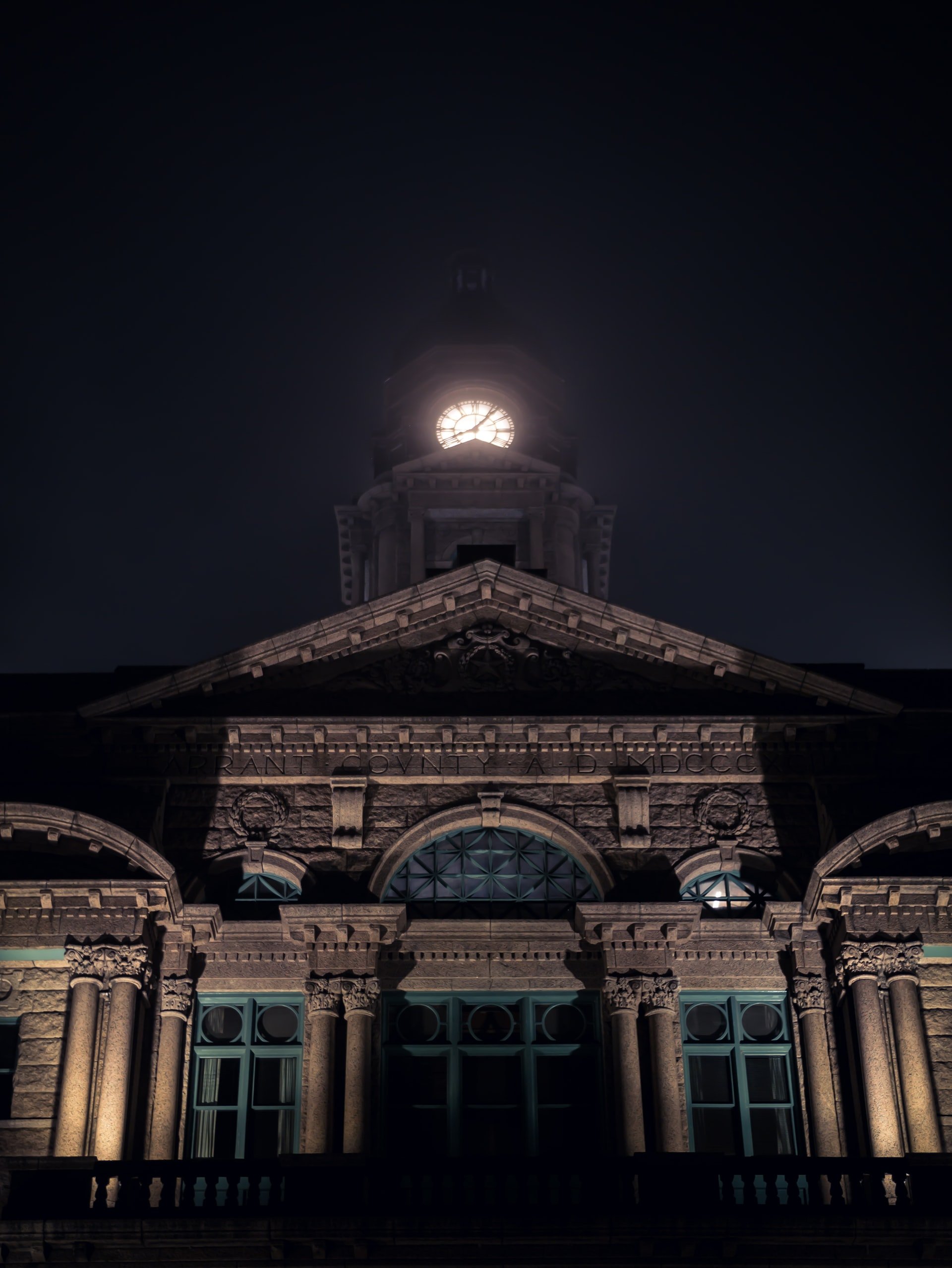
Fort Worth, Texas
Fort Worth, Texas Photo by Alton Stephens on Unsplash
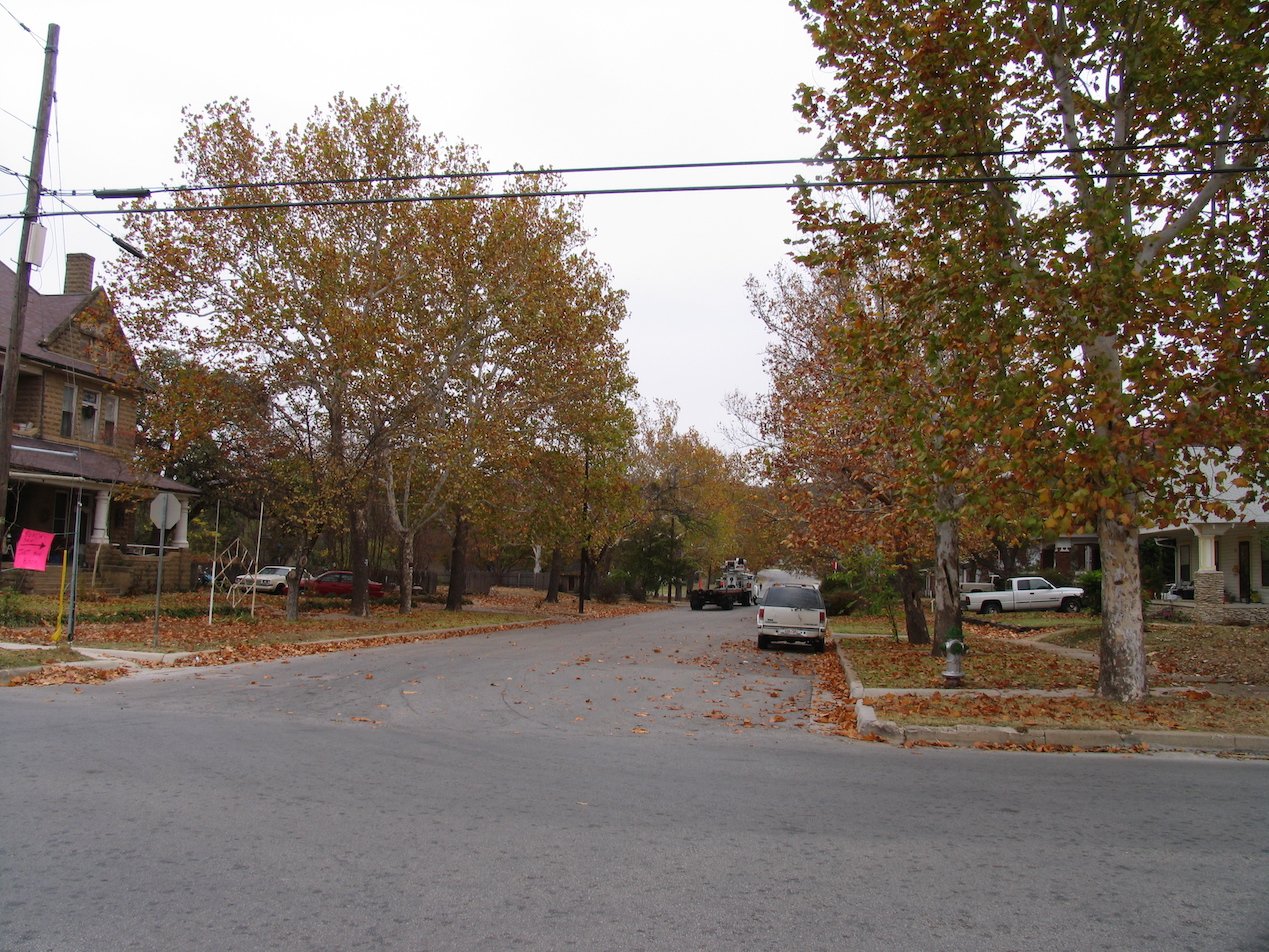
Mineral Wells, Texas
View of gorgeous fall foliage in Mineral Wells, Texas.
Photograph Credit: Robert Plocheck.
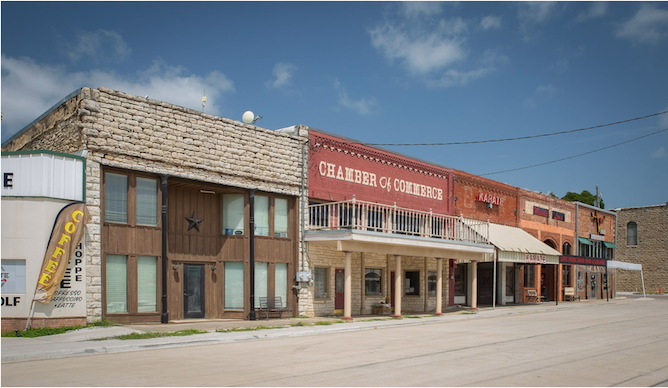
Springtown, Texas
Downtown Springtown, Texas, located both in Parker and Wise Counties. Photography by Renelibrary.
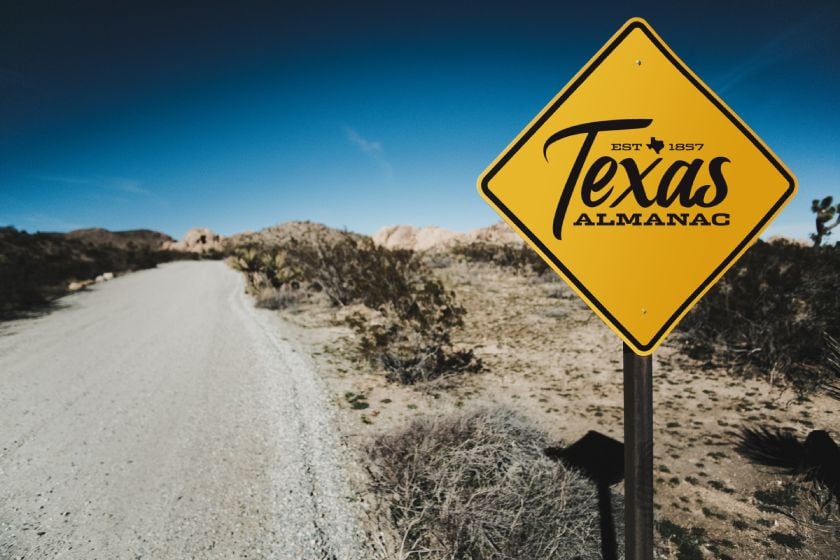
Proud to call Texas home?
Put your name on the town, county, or lake of your choice.
Search Places »
